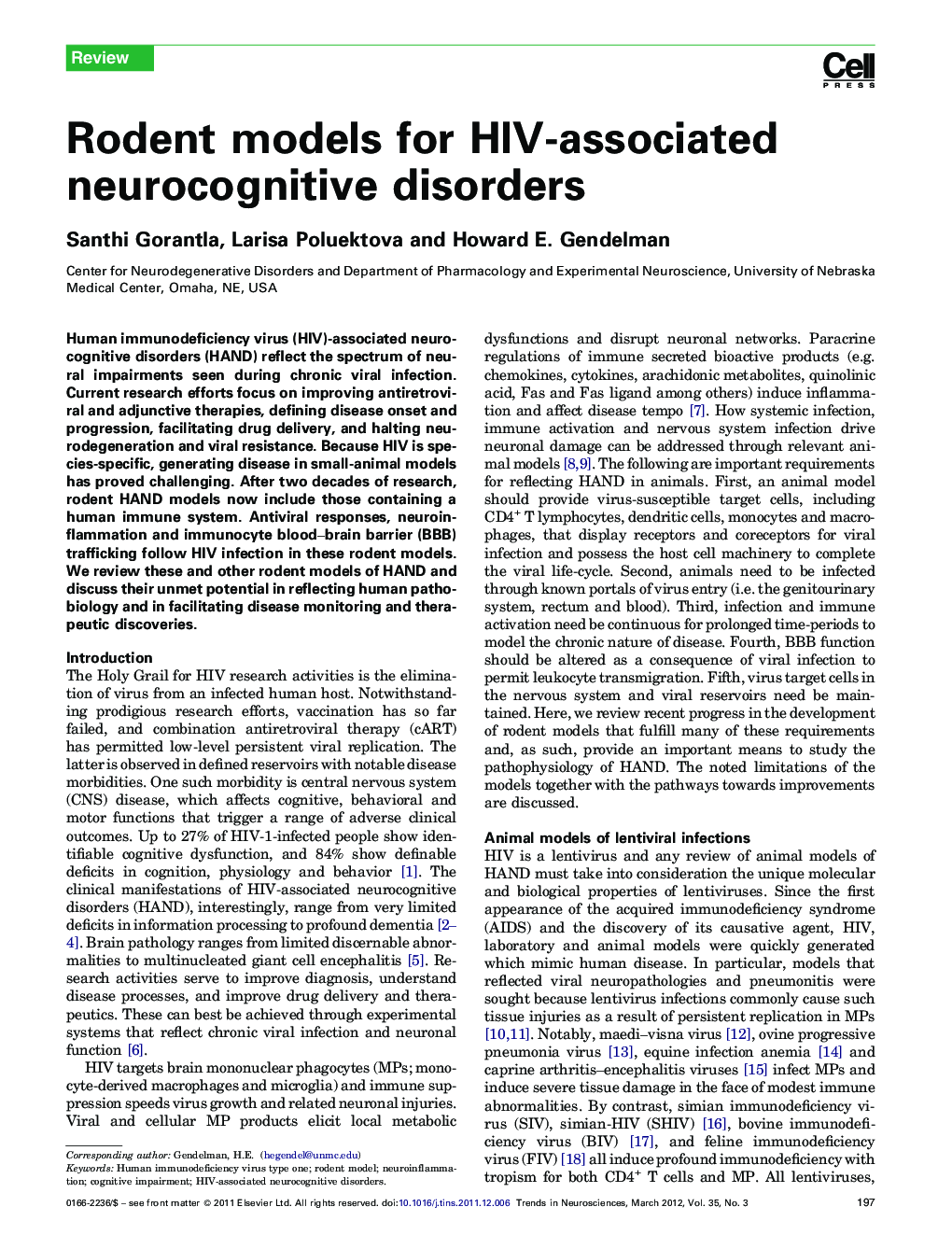| Article ID | Journal | Published Year | Pages | File Type |
|---|---|---|---|---|
| 4354510 | Trends in Neurosciences | 2012 | 12 Pages |
Human immunodeficiency virus (HIV)-associated neurocognitive disorders (HAND) reflect the spectrum of neural impairments seen during chronic viral infection. Current research efforts focus on improving antiretroviral and adjunctive therapies, defining disease onset and progression, facilitating drug delivery, and halting neurodegeneration and viral resistance. Because HIV is species-specific, generating disease in small-animal models has proved challenging. After two decades of research, rodent HAND models now include those containing a human immune system. Antiviral responses, neuroinflammation and immunocyte blood–brain barrier (BBB) trafficking follow HIV infection in these rodent models. We review these and other rodent models of HAND and discuss their unmet potential in reflecting human pathobiology and in facilitating disease monitoring and therapeutic discoveries.
